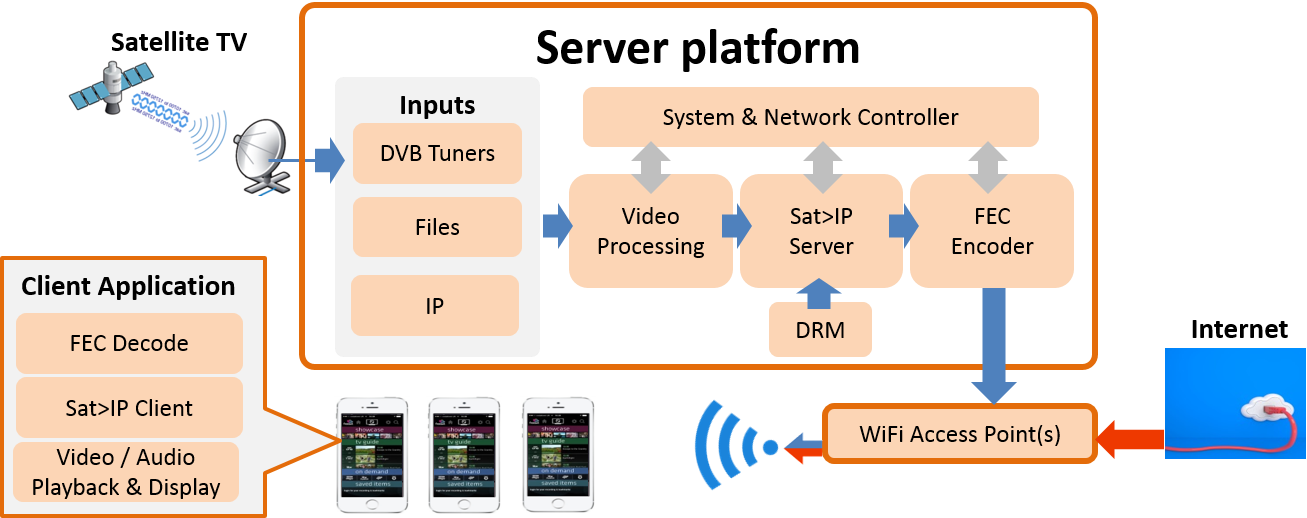PAGE CONTENTS
Objectives
The objective of the project was to build upon a previous Sat>IP WiFi Hotspot project to sufficiently develop the system to the point that it was ready for commercial deployment.
The Bx-WiFi technology enables broadcasting of uninterrupted audio or video content from multiple sources to thousands of smartphone or tablet devices, all connected to Wi-Fi access points, while simultaneously providing general internet access.
The objectives were:
-
Development of a software-based server platform so that it is installable on standard PC servers
-
Improvement of the client application to enhance user experience and improve quality
-
Thorough analysis of WiFi access points and common mobile phones. To ensure Bx-WiFi works across as many devices as possible
-
Development of a novel dynamic FEC procedure using Software Defined Networks to enhance robustness of the system and to maximize efficiency
Challenges
The key challenge faced in the project was to make the Bx-WiFi system operate with as many standard WiFi access points and mobile devices as possible. Analysis of several devices was carried out which was then feed into the development of the Bx-WiFi server and client applications.
System Architecture
A block diagram of the Bx-WiFi system is shown in the diagram below. It consist of three main components:
Server platform
This is a suite of software applications that take in video content streams, process them and output them via multicast over an IP network
Content can come from multiple sources including DVB, IP and Files. The content is typically transcoded and FEC is applied.
WiFi network
The WiFi network consists of one or more WiFi access points.
Client Application
This application runs on the end user’s mobile device. It supports Android, iOS, Raspbian and Ubuntu devices. Once the app is installed on the device and the end user runs the App while at an event using Bx-WiFi they are able to discover the live streams then play and view them.

Plan
The project consisted of three development phases each ending with a trial of the system. It was intended that these trials would be held at public events. Covid-19 meant this was not feasible for the last two trials, closed technical trials were held instead
Current Status
All work has now been completed



